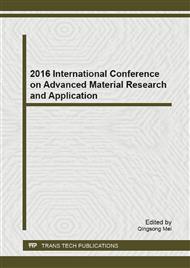p.285
p.291
p.296
p.300
p.306
p.317
p.323
p.329
p.334
Experimental Study on the Emergency Disposal Agent for Methanol Leakage
Abstract:
According to the characteristics of methanol leakage hazard, a new kind of foam decontamination agent was prepared and tested. Experiments were conducted in a laboratory-scale apparatus, where the effect of composition and amount on the decontamination performance of the foam was studied in detail. Results showed that the decontaminating efficiency of the foam was above 92% with the volume of foam agent sprayed 3 times of the methanol leaked. Moreover, the thick foam layer could stably cover the liquid methanol for a long time, efficiently inhibiting the volatilization of methanol vapor. Such performance of the foam agent was much superior to that of the commonly used water mist and activated carbon powder. The results are expected to provide useful experimental data and theoretical basis for the practical emergence disposal of methanol leakage.
Info:
Periodical:
Pages:
306-313
Citation:
Online since:
January 2017
Authors:
Keywords:
Price:
Сopyright:
© 2017 Trans Tech Publications Ltd. All Rights Reserved
Share:
Citation:


